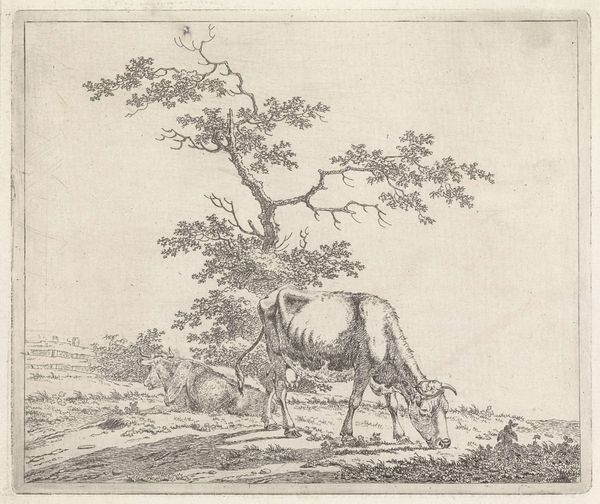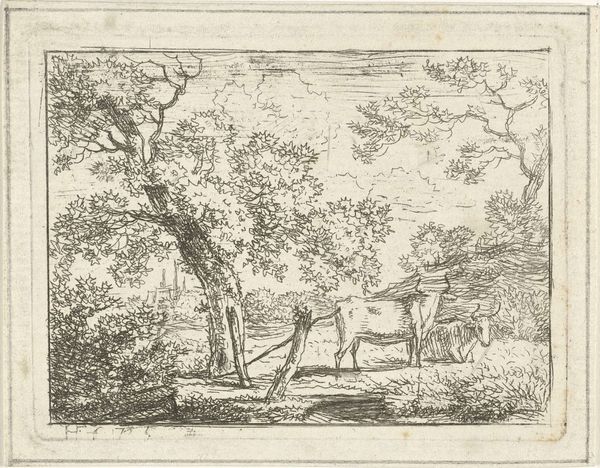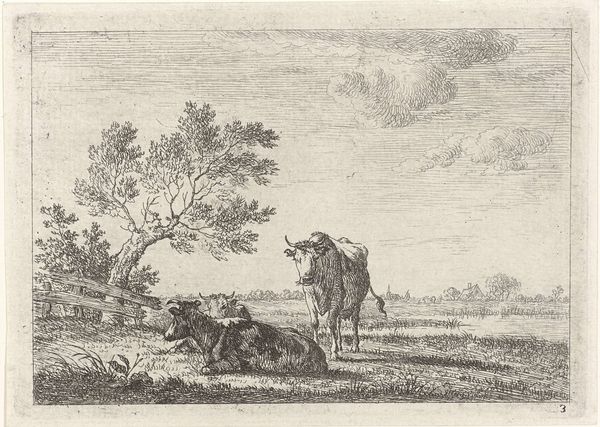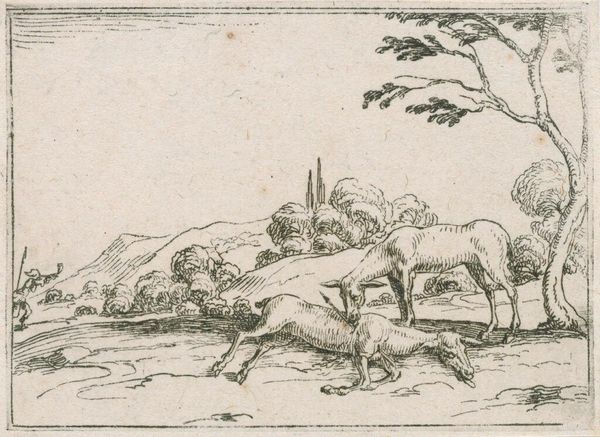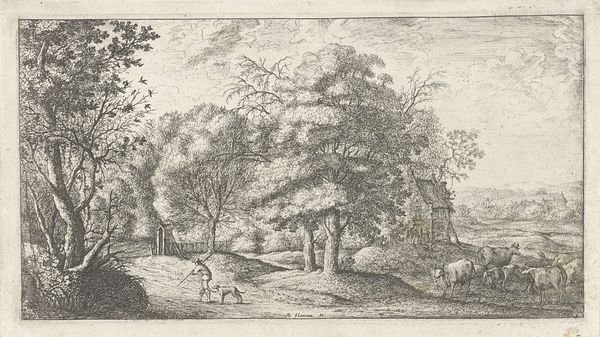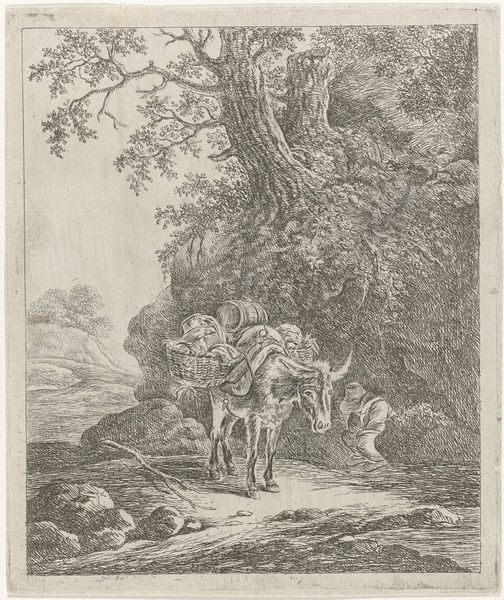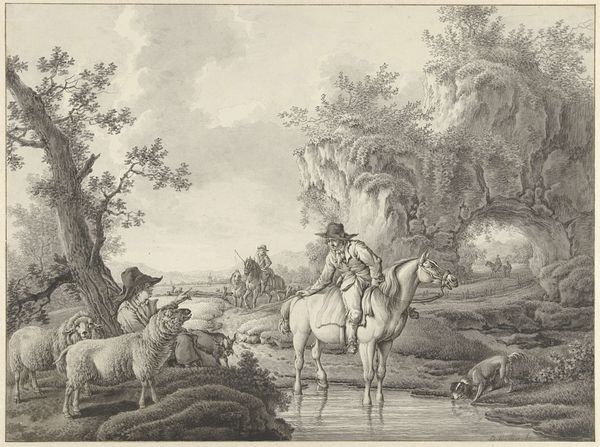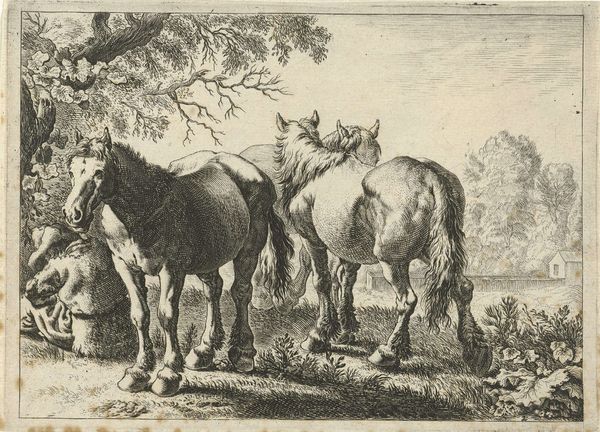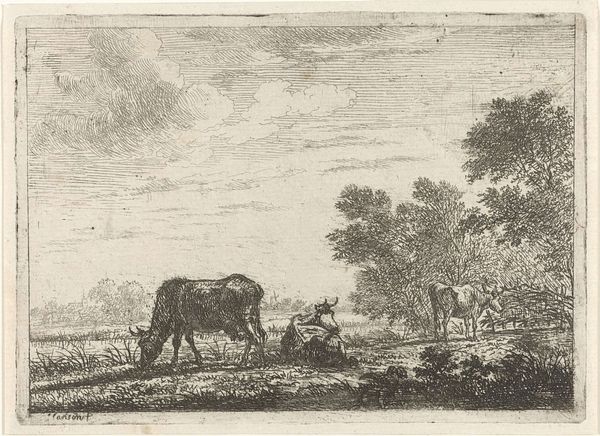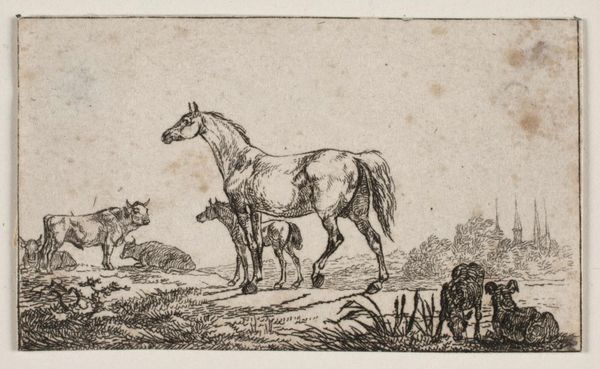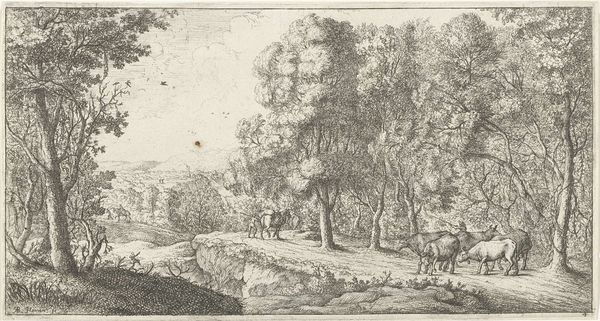
Dimensions: 6.5 x 8.2 cm (2 9/16 x 3 1/4 in.)
Copyright: CC0 1.0
Curator: Let's discuss Jacques Callot's miniature etching, "Doe," held here at the Harvard Art Museums. I'm struck by its delicate lines. Editor: Indeed. I find it melancholic—the landscape rendered so sparsely, emphasizing the isolation of the animal. It's a study in contrasts, really. Curator: Callot's etching technique involved meticulous labor; the tooling, the acid baths, the printing. This was not merely representation but a material transformation, echoing the societal relationship with nature and its resources. Editor: But consider the form itself. The doe, so finely articulated, the trees sketched with such controlled chaos—the composition guides the eye. The linear perspective flattens, creating a tension between depth and surface. Curator: I agree about the surface, and the flatness of the image, but it is equally important to consider the materials at hand, readily available to be sold in the marketplace at the time. This brings into question the social structures governing Callot's production. Editor: Perhaps. I'm left pondering the emotional effect. The formal arrangement gives this image its lasting power. Curator: And for me, it's the material conditions that allow it to exist. Editor: A fascinating point of divergence.
Comments
No comments
Be the first to comment and join the conversation on the ultimate creative platform.
